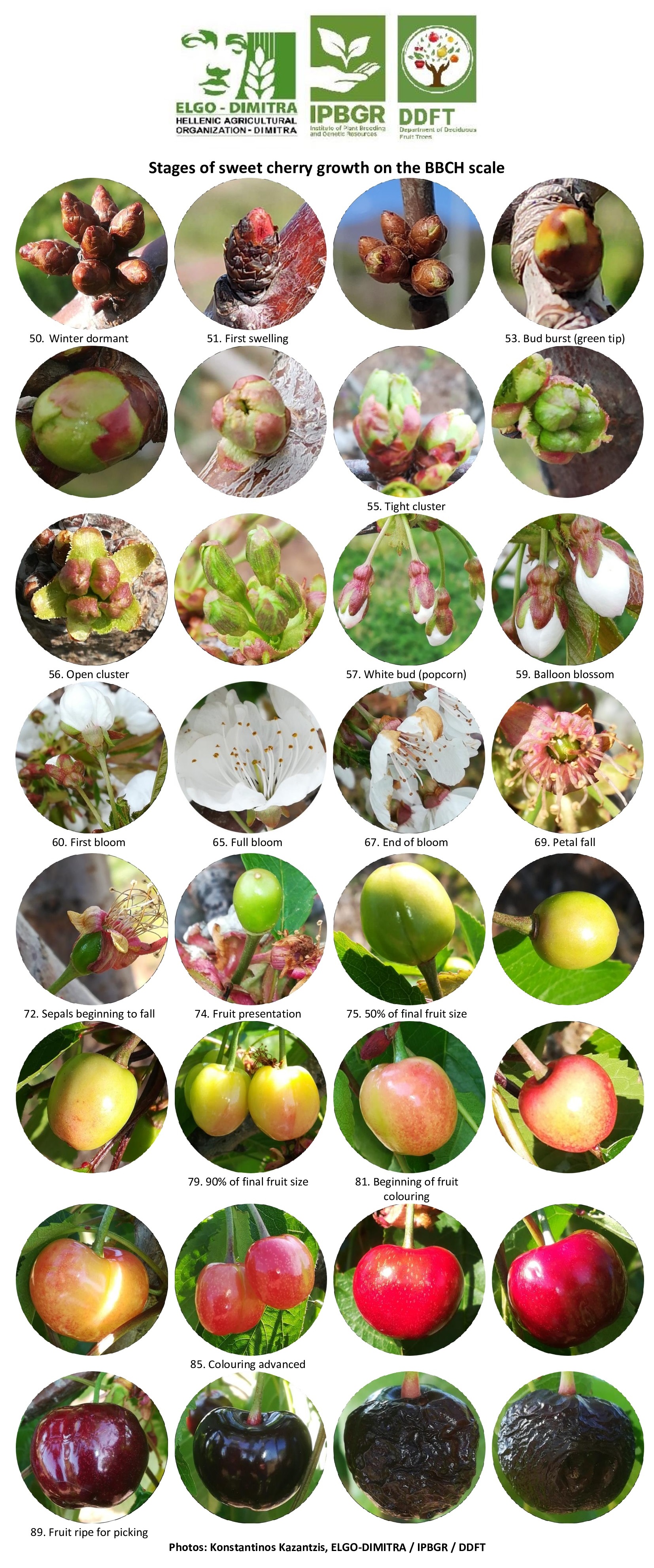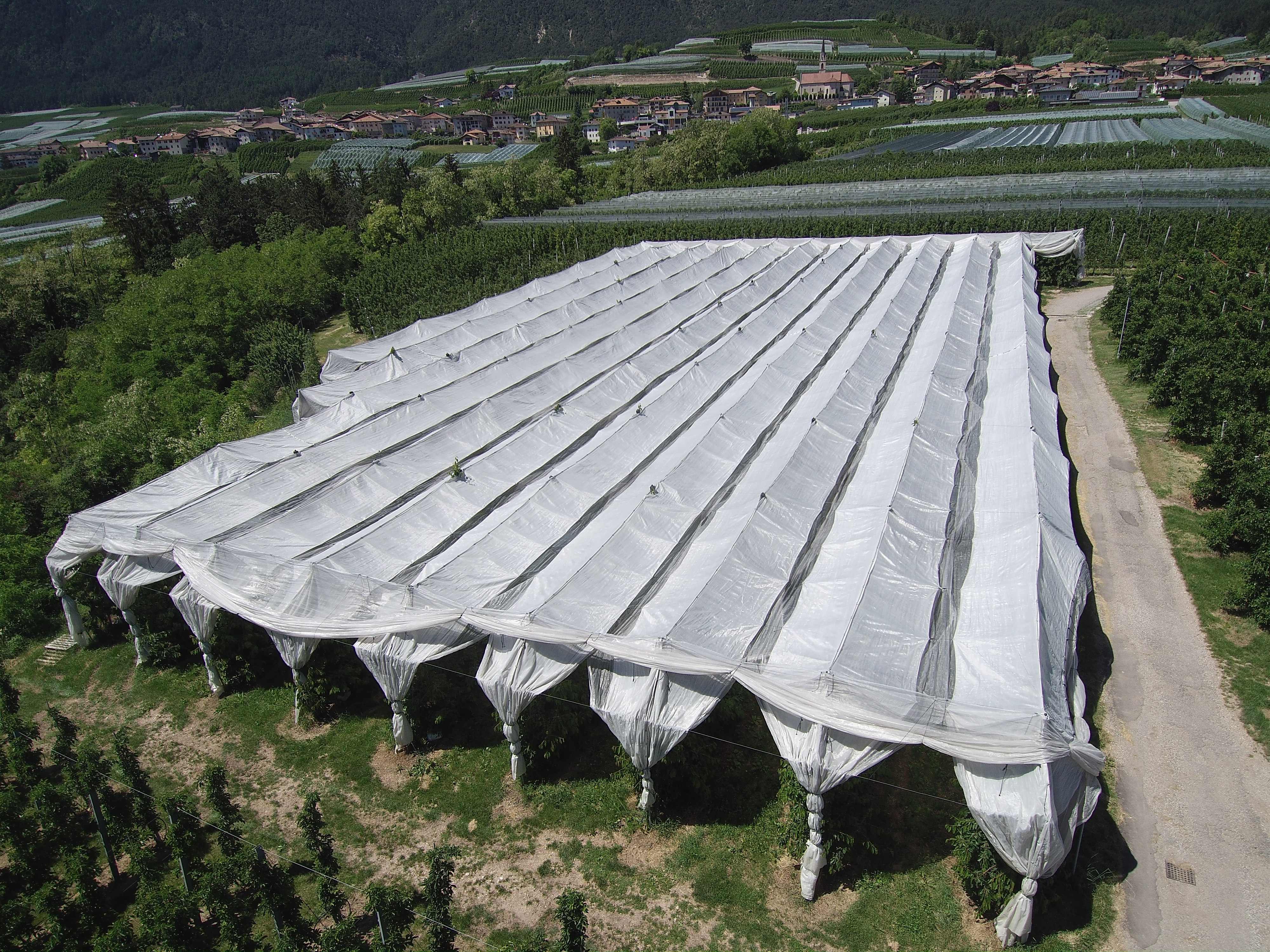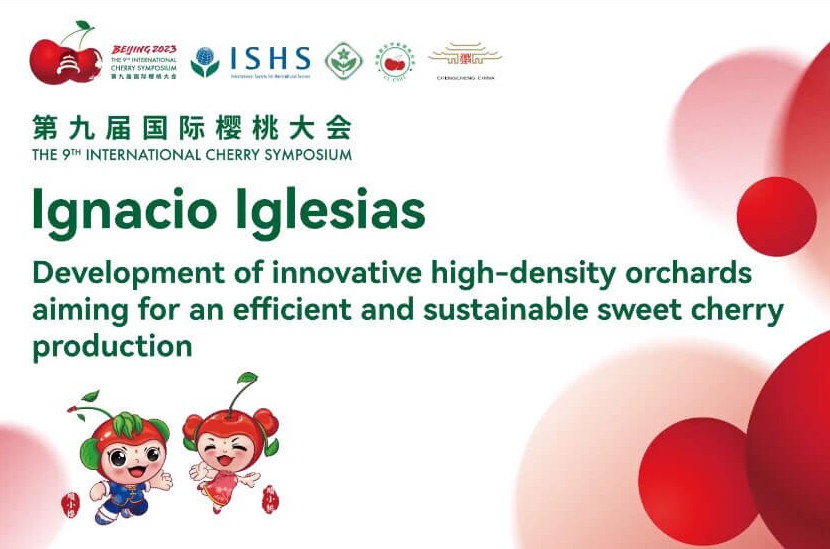The BBCH scale is used to describe and label the phenological stages of plants. The abbreviation BBCH derives from Biologische Bundesanstalt, Bundessortenamt und Chemische Industrie.
Initially, the BBCH scale was developed for cereals but later was adapted to other species, such as cherry. It consists of a numerical code and is usually accompanied by the appropriate illustrative photo.
The significance of this scale is of great importance for visual monitoring of plant growth stages and helps to make decisions regarding fertilization, irrigation, plant protection and other cultural practices (e.g. pruning), at the appropriate time.
BBCH scale of cherry according to principal growth stages
Principal growth stage 0: Bud development
- 00 Dormancy
- 01 Beginning of bud swelling
- 03 End of leaf bud swelling
- 09 Green leaf tips visible
Principal growth stage 1: Leaf development
- 10 First leaves separating
- 11 First leaves unfolded
- 19 First leaves fully expanded.
Principal growth stage 3: Shoot development
- 31 Beginning of shoot growth
- 32 20% of final shoots length
- 33 30% of final shoots length
- 39 90% of final shoots length.
Principal growth stage 5: Reproductive development or inflorescence emergence.
- 50 Dormancy, inflorescence bud closed
- 51 Inflorescence buds swelling
- 53 Bud burst
- 54 Inflorescence enclosed by light green scales
- 55 Single flower buds visible
- 56 Flower pedicel elongating
- 57 Sepals open
- 59 Balloon
Principal growth stage 6: Flowering
- 60 First flowers open
- 61 Beginning of flowering
- 62 20% of flowers open
- 63 30% of flowers open
- 64 40% of flowers open
- 65 Full flowering
- 67 Flower fading
- 69 End of flowering
Principal growth stage 7: Fruit development
- 71 Ovary growing
- 72 Sepals beginning to fall
- 73 Second fruit fall
- 75 50% of final fruit size
- 76 60% of final fruit size
- 77 70% of final fruit size
- 78 80% of final fruit size
- 79 90% of final fruit size
Principal growth stage 8: Ripening or maturity
- 81 Beginning of fruit colouring
- 85 Colouring advanced
- 87 Fruit ripe for picking
Principal growth stage 9: Senescence, beginning of dormancy
- 92 Leaves begin to discolour
- 93 Beginning of leaf fall
- 95 50% of leaves fallen
- 97 All leaves fallen

Source: Fadón E., Herrero M., Rodrigo J. 2015. Flower development in sweet cherry framed in the BBCH scale. Scientia Horticulturae, Volume 192, 31 August 2015, Pages 141-147.
Images: DDFT / IPBGR / ELGO-DIMITRA.
Konstantinos Kazantzis and Thomas Sotiropoulos
Hellenic Agricultural Organization DIMITRA (ELGO-DIMITRA), Institute of Plant Breeding and Genetic Resources, Department of Deciduous Fruit Trees, Naoussa, Greece
Cherry Times - All rights reserved











